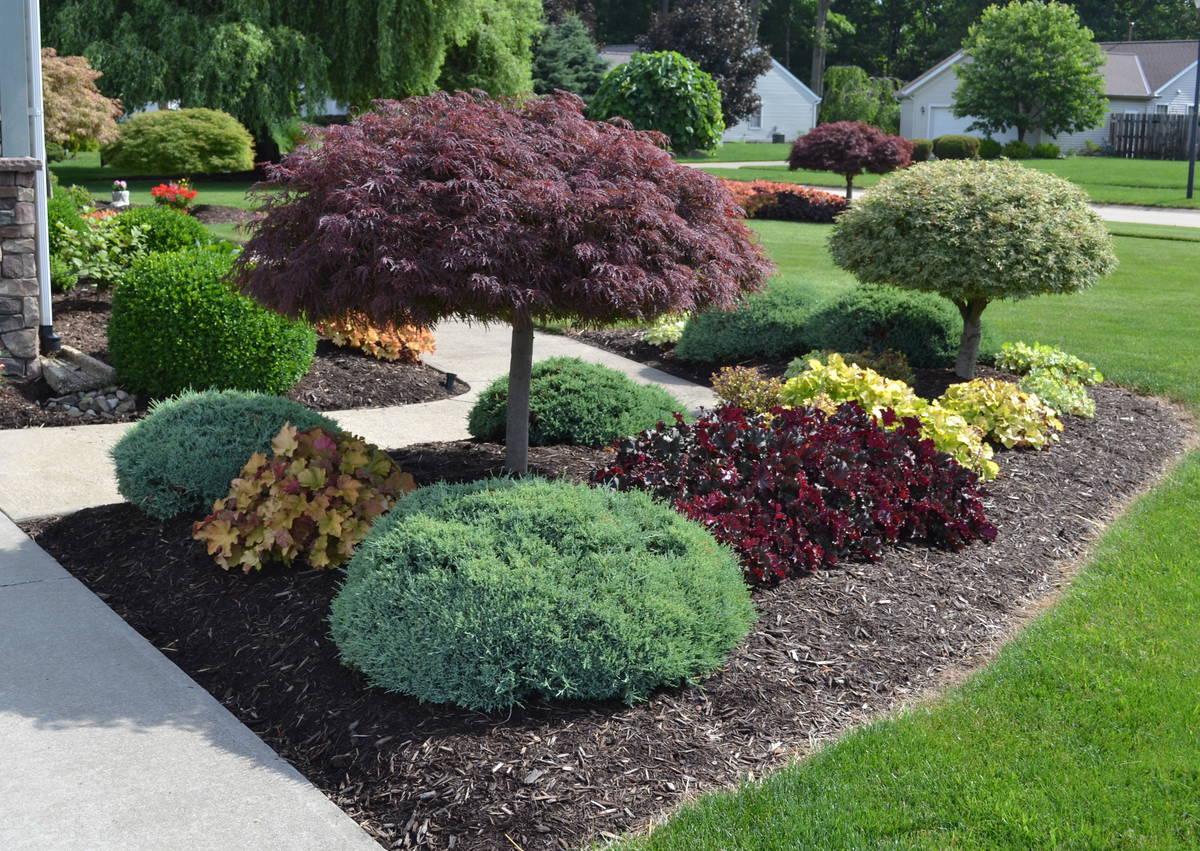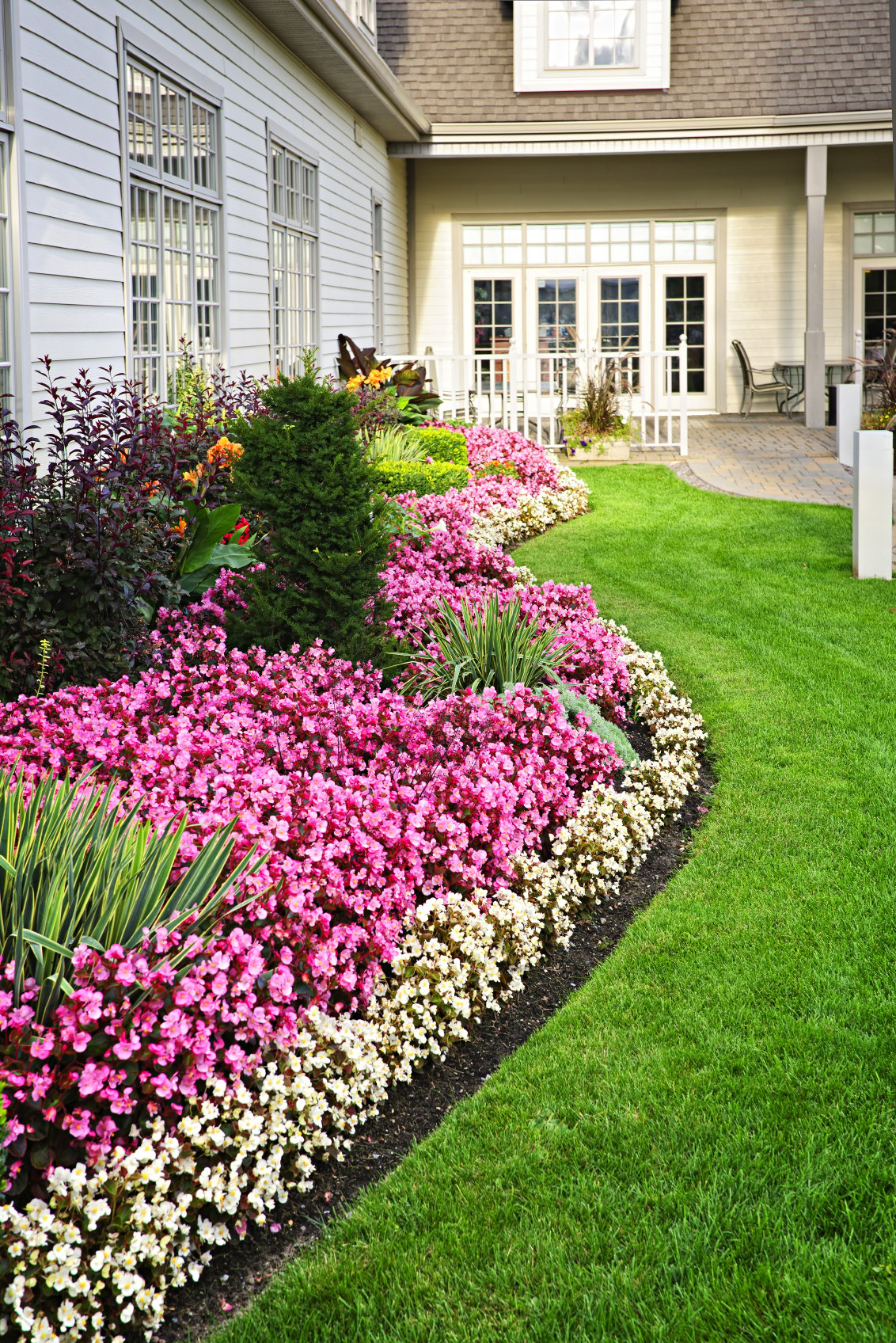Everything about Landscaping: Changing Your Outside Spaces Into Scenic Retreats
Landscaping plays an essential duty in improving outdoor areas. It combines art and functionality to develop welcoming atmospheres. By recognizing layout concepts and choosing the right plants, one can achieve a unified and well balanced landscape. In addition, integrating hardscaping aspects provides framework and energy. The trip to a beautiful landscape does not end with installment; continuous maintenance is needed. What strategies can one employ to assure their exterior resort remains enjoyable and vibrant?

Understanding Landscape Design Principles
Landscape design principles work as the foundation for creating unified outside spaces. These principles include equilibrium, percentage, rhythm, and unity, leading the setup of components within a landscape. Balance can be accomplished with unbalanced or in proportion layouts, making certain visual security. Proportion relates to the size and scale of numerous attributes, developing a natural appearance that really feels comfortable to the onlooker. Rhythm, accomplished through repetition and pattern, leads the eye naturally through the landscape, cultivating a sense of circulation. Unity connections all components with each other, permitting a seamless integration of design parts. In addition, the usage of focal points guides attention and creates interest within the space. By applying these concepts attentively, designers can transform regular settings right into welcoming and practical exterior locations that reverberate with charm and objective. Eventually, recognizing these fundamental principles is necessary for anyone wanting to improve their outdoor spaces successfully.
Picking the Right Plants for Your Room
Selecting the right plants is essential to boosting outside areas and complements the concepts of landscape layout. The procedure begins with recognizing the details problems of the area, consisting of sunlight, dirt type, and environment. By examining these variables, individuals can select plants that flourish in their environment, making sure durability and vibrancy.Diversity in plant selection is crucial for developing visual interest and seasonal variety. Including a mix of trees, annuals, bushes, and perennials can provide shade, texture, and framework throughout the year. Additionally, considering the scale and growth behaviors of plants assists preserve consistency within the landscape, preventing overcrowding or out of proportion arrangements.Native plants are commonly recommended due to their versatility and reduced maintenance needs, promoting regional biodiversity. Ultimately, incorporating plants that serve details features, such as personal privacy displays or windbreaks, can boost the total energy of the outdoor space while creating a peaceful environment.

Developing Useful Outdoor Areas
Creating practical outside areas is necessary for making best use of the utility and satisfaction of a home. Thoughtful layout can transform a yard into a versatile space for relaxation, recreation, and entertainment. To complete this, house owners ought to consider their lifestyle needs and choices. Designating areas, such as eating locations, play areas, or quiet hideaways, permits for a seamless circulation in between different activities.Incorporating furniture suited for outside usage enhances comfort and motivates celebrations. Shield frameworks, like pergolas or umbrellas, provide Web Site relief from the sunlight while adding visual allure. In addition, paths can promote motion and connect different sections of the backyard, promoting exploration.Accessibility is essential; making certain that all areas can be easily gotten to accommodates visitors of all ages. By focusing on functionality, outdoor spaces can be transformed right into welcoming extensions of the home, promoting memorable experiences and boosting general exterior living.
Incorporating Hardscaping Elements
Hardscaping aspects play a vital role in boosting outside spaces by supplying structure and capability. These functions include outdoor patios, sidewalks, maintaining wall surfaces, and decks, which contribute to the overall layout and use of the landscape. By incorporating hardscaping, home owners can produce defined areas for enjoyment, activity, and leisure, properly directing visitors through the space.Moreover, hardscaping materials such as stone, brick, or concrete can enhance the all-natural components of the lawn, including appearance and visual rate of interest. Using these materials likewise aids to handle drainage and stop soil erosion, promoting a more sustainable landscape.Incorporating hardscaping elements not just increases the visual appeal but also elevates the building's worth. This careful blend of hardscape and softscape guarantees that exterior locations are both functional and welcoming, enabling a seamless change in between constructed and natural atmospheres.
Maintenance Tips for a Thriving Landscape
A well-designed landscape, complete with both hardscaping and softscaping elements, calls for regular maintenance to prosper. Routine tasks such as mowing, pruning, and weeding are essential for keeping plants healthy and visually pleasing. Regular watering, especially throughout droughts, assurances that plants receive appropriate dampness to grow. Mulching around blossom beds not only saves dirt dampness however likewise suppresses weed growth.For hardscaping, regular cleaning and securing of surfaces such as sidewalks and patios help avoid wear and tear and maintain visual charm. Inspecting and repairing any type of architectural aspects, like fencings or maintaining wall surfaces, will certainly prolong their lifespan.Lastly, seasonal modifications, like changing and applying fertilizers watering systems, enhance plant wellness. By adhering to these upkeep ideas, home owners can guarantee that their landscapes continue to be dynamic and welcoming throughout the year, improving both aesthetic allure and outdoor satisfaction.
Regularly Asked Concerns
Just How Much Does Professional Landscaping Typically Cost?
Expert landscaping costs can differ considerably, normally varying from $1,000 to $10,000 depending on project dimension, complexity, and products utilized. Home owners should consider their budget plan and preferred results when seeking specialist landscaping solutions.
What Are the very best Landscaping Patterns for This Year?
This year's best landscape design patterns stress sustainability, including indigenous plants, upright gardens, and eco-friendly materials. Outdoor Lighting Installer. Additionally, outside living spaces, click here now water attributes, and clever technology assimilation are getting appeal, boosting both charm and capability in outside atmospheres
Can I Landscape My Yard on a Budget?

How Do I Pick a Landscape Design Contractor?
Selecting a landscape design specialist involves researching credentials, reviewing reviews, and acquiring several quotes. It's crucial to assess their experience, communication abilities, and past projects to ensure placement with one's vision and budget. Trust fund and professionalism and reliability are vital.

What Prevail Landscaping Blunders to Avoid?
Typical landscape design errors to prevent include overplanting, ignoring soil quality, overlooking regional environment, falling short to intend for upkeep, and not considering the building's existing features. Recognition of these risks can cause more successful outdoor designs - Retaining Wall Installation. Landscape design plays an essential role in enhancing exterior spaces. Landscape style principles offer as the foundation for creating unified outdoor areas. Picking the right plants is vital to boosting outside rooms and matches the principles of landscape layout. Designating areas, such as eating locations, play spaces, or peaceful hideaways, permits for a smooth flow between various activities.Incorporating furniture matched for exterior use boosts comfort and urges events. Hardscaping aspects play an important role in improving outdoor spaces by providing framework and performance